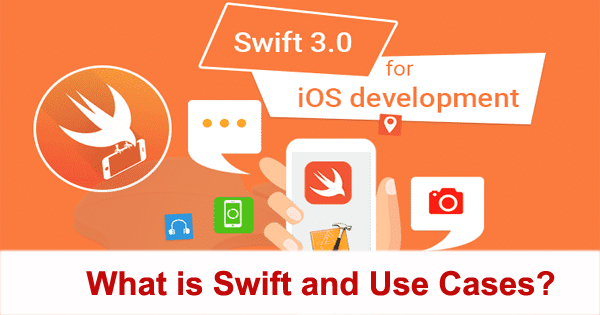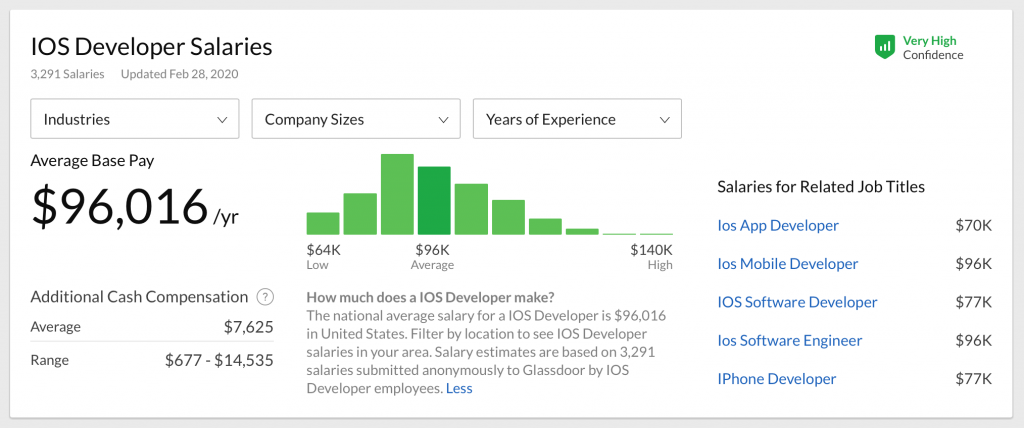

Swift is a broadly useful programming language assembled utilizing a cutting edge way to deal with wellbeing, execution, and programming configuration designs. The language is altered by Python, making it fast and intuitive. Swift has grown tremendously since its inception and introduction at WWDC 2014, and the developer community around this language continues to grow. Swift creators acknowledged the fact that in order to build a defining programming language, the technology needs to be open for all. So, within its seven years of existence, Swift acquired a large supportive community and an abundance of third-party tools. The goal of the Swift project is to create the best available language for uses ranging from systems programming, to mobile and desktop apps, scaling up to cloud services.
These are the main features of Swift Programming Language.
- Generics that are powerful and simple to use
- Protocol extensions that make writing generic code even easier
- First class functions and a lightweight closure syntax
- Fast and concise iteration over a range or collection
- Tuples and multiple return values
- Structs that support methods, extensions, and protocols
- Enums can have payloads and support pattern matching
- Functional programming patterns, e.g., map and filter
History & Origin of Swift
First introduced of at Apple’s 2014 Worldwide Developers Conference (WWDC), the Swift programming language has generated considerable debate ever since. Chris Lattner, Apple’s Senior Director, Developer Tools Department, started designing the basic concepts of the new language back in 2010. SWIFT was founded in the 1970s, based on the ambitious and innovative vision of creating a global financial messaging service, and a common language for international financial messaging.
How works Swift architecture?
It will be helpful at the beginning for you to have an overall feeling of how the Swift language is developed and what a Swift-based iOS program resembles. This section will overview the general engineering and nature of the Swift language. Ensuing parts will fill in the subtleties. The Clean Swift architecture is using a VIP cycle to help you separate logic in your application. The VIP cycle consists of a ViewController, Interactor and a Presenter. All classes are responsible for some logic.
Use case of Swift?
Business Analysts require a way to communicate how a system should behave when running (possibly as part of a wider system or process).
Because the behaviour can be specified in a way that can be easily understood, potential errors with the system can be identified and resolved at an early stage of software analysis (and certainly before being implemented).
Feature and Advantage of Swift
- Readability
- Data cycle
- Maintenance
- Safer Platform
- Less Code & Less Legacy
- SpeedSwift
- Supports Dynamic Libraries
- Playgrounds’ Encourages Interactive Coding
- Open-Source
Best Alternative of Swift
- Objective-C
- Kotlin
- Java
- Rust
- React Native
- Go
- Python
- Xcode
Best Resources, Tutorials and Guide for Swift
- https://hackr.io
- https://analyticsindiamag.com
- https://levelup.gitconnected.com
- https://codewithchris.com
Free Video Tutorials of Swift.
Interview Questions and Answer for Swift
1. What Causes an Error in This Piece of Code? How Could You Fix It?
2. What is the Value of Variable Len? Why?
3. Name the 5 Control Transfer Statements and Describe How to Use Them
Five control transfer statements are:
- Break
- Continue
- Fallthrough
- Throw
- Return
4. Suggest a Small Refactoring to This Code
Jobs & Salary Prospectus of Swift skills
It’s not surprising that everyone and their dog wants to be part of it.
But how much does an iOS developer actually make?
Salaries for software developers are, in general, quite high. That is true also for iOS developers. How much you can earn depends on many factors, though. The main ones are your location and your experience.
Luckily, there are a few websites where you can get a ballpark figure. According to Glassdoor, in the United States, these are the salaries for iOS developers:
entry level: $64.000
average: $96.000
high: $140.000

Best Certifications in Swift
- Introduction To Swift Programming by the University of Toronto
- Swift 5 Essential Training by LinkedIn Learning
- Swift: Master Swift Properties in Less Than 1 Hour by Swift Next Step
- Design Patterns in Swift by Udemy
- SwiftUI Essential Training by LinkedIn Learning
- SwiftUI by Examples by Anyone Can Code
- Diving Deep into Swift by Udemy
- Professional Swift by Udemy
- Learning Higher-Order Functions with Swift by LinkedIn Learning
Best Courses and Institute for learning Swift
- DevOpsSchool
- Coursera
- Knowledgehut
- besanttechnologies
I’m a DevOps/SRE/DevSecOps/Cloud Expert passionate about sharing knowledge and experiences. I am working at Cotocus. I blog tech insights at DevOps School, travel stories at Holiday Landmark, stock market tips at Stocks Mantra, health and fitness guidance at My Medic Plus, product reviews at I reviewed , and SEO strategies at Wizbrand.
Please find my social handles as below;
Rajesh Kumar Personal Website
Rajesh Kumar at YOUTUBE
Rajesh Kumar at INSTAGRAM
Rajesh Kumar at X
Rajesh Kumar at FACEBOOK
Rajesh Kumar at LINKEDIN
Rajesh Kumar at PINTEREST
Rajesh Kumar at QUORA
Rajesh Kumar at WIZBRAND

 Starting: 1st of Every Month
Starting: 1st of Every Month  +91 8409492687
+91 8409492687  Contact@DevOpsSchool.com
Contact@DevOpsSchool.com
